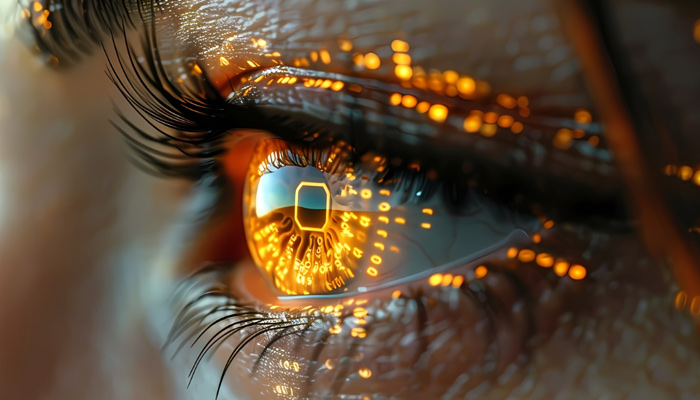
Revolutionary Smart Contact Lenses
A Leap Forward in Glucose Monitoring and Beyond
A recent study has unveiled an exciting development in the field of smart contact lenses, which could have significant implications for medical diagnostics and patient care. Researchers from the University of Utah (and published in the journal Small) have engineered a power-efficient, multifunctional smart contact lens that is capable of continuously monitoring glucose levels in tear fluid, offering a promising alternative to invasive blood glucose testing for diabetic patients.
The smart lens incorporates a flexible antenna and a rectifier circuit to wirelessly harvest energy from radio frequency waves. This energy powers a tiny biosensor integrated into the lens, which detects glucose levels in real-time. In addition to glucose monitoring, this smart lens is equipped to measure intraocular pressure—a critical factor in glaucoma management. It can also potentially monitor other biomarkers in tear fluid, broadening its diagnostic capabilities.
Energy harvesting literally occurs in the blink of an eye: When the eye is completely open, the harvester is off. Then when the eye starts to blink, the tear electrolytes meet the magnesium anode, causing an oxidation reaction and the generation of electrons and ultimately delivers about 150 microwatts of power at a stable 3.3 volts—no antennae, external battery pack, or special charging case required.
What makes this innovation particularly remarkable is its ultra-low power consumption. By leveraging advanced materials and nanotechnology, the research team has minimized the power required for the lens to function, extending its operational lifespan and improving patient comfort. The development represents a significant step forward in the ongoing effort to create seamless, non-invasive health monitoring devices.
Is This the Beginning of a Real Augmented Reality System?
The implications of this technology are vast. Beyond glucose monitoring, the smart lens could be adapted to detect various health conditions by analyzing other biomarkers in tear fluid, offering a window into the body’s health without the need for invasive procedures. As the technology continues to evolve, smart contact lenses may soon become a staple in personalized medicine, transforming the way we diagnose and manage diseases.
For doctors and scientists, this study highlights the potential of integrating cutting-edge technology into everyday medical practice, opening up new avenues for research and patient care. As the technology matures, it could greatly enhance our ability to monitor chronic conditions and improve patient outcomes through more personalized and proactive health management strategies.





